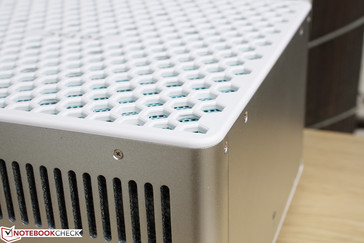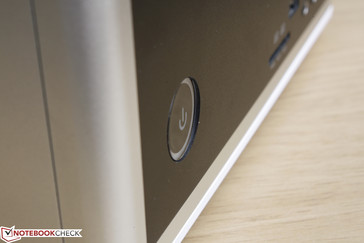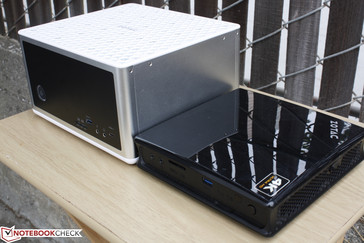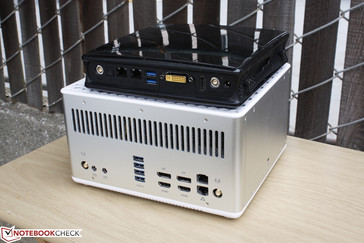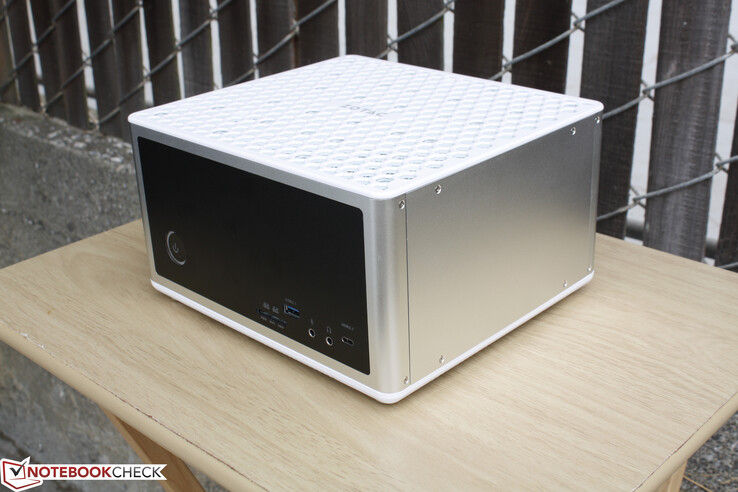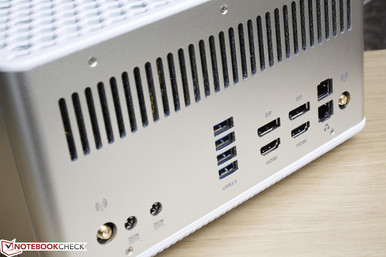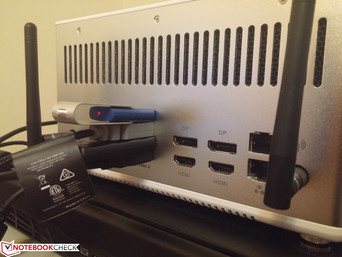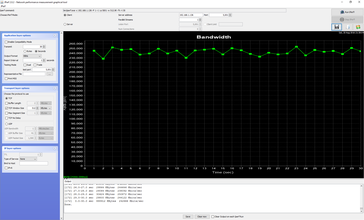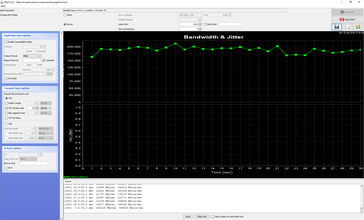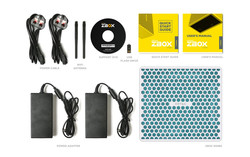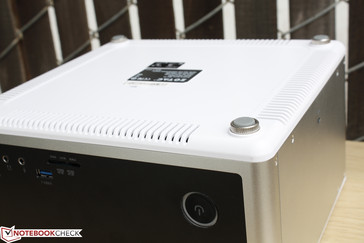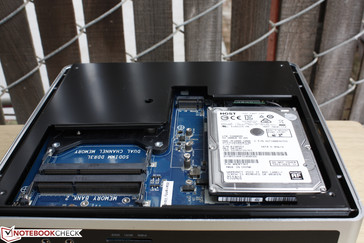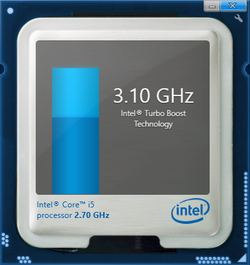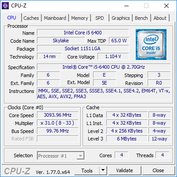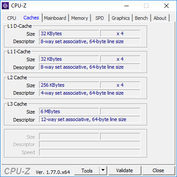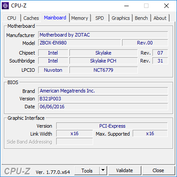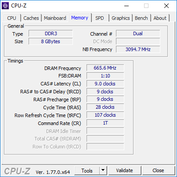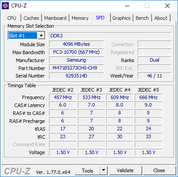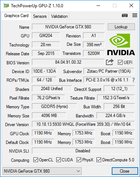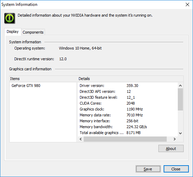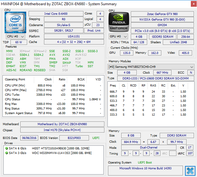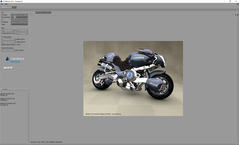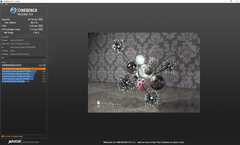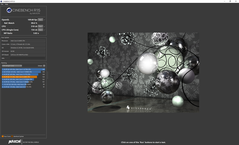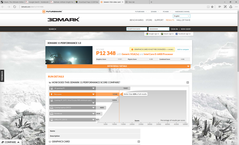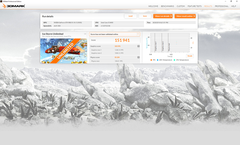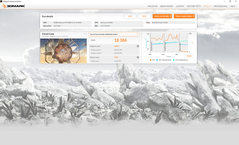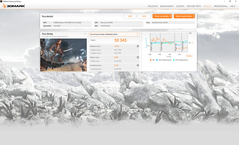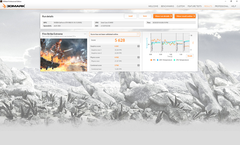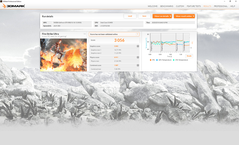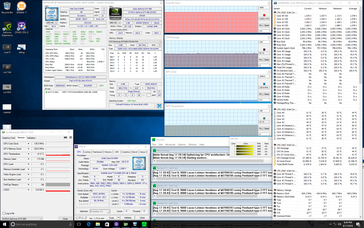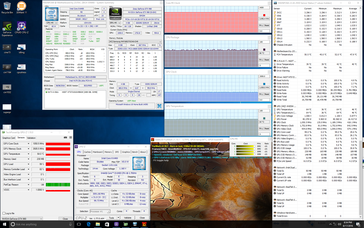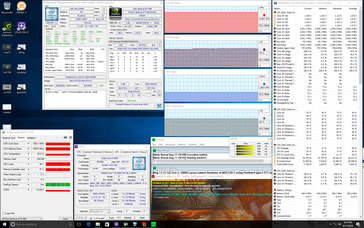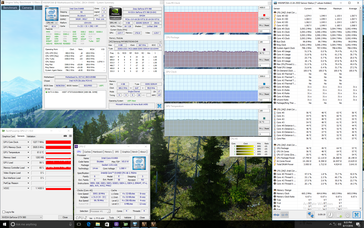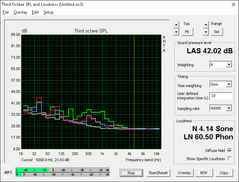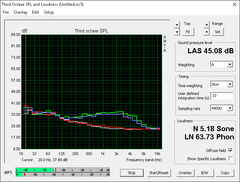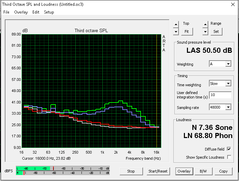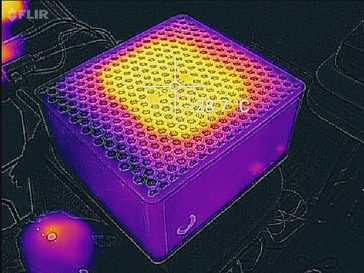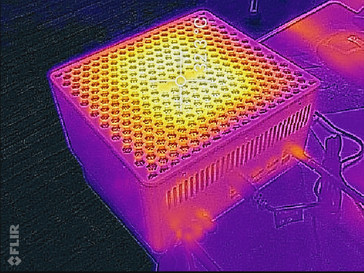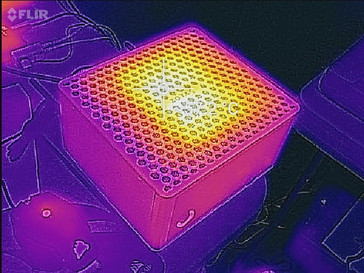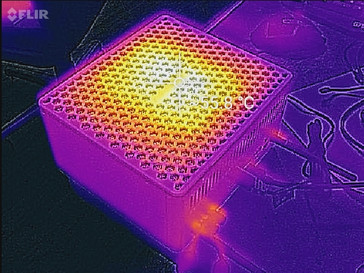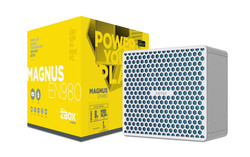Zotac ZBOX Magnus EN980 Mini PC Review

The gaming-ready ZBox-EN760 mini PC from Zotac was intended to be a first generation Steam Machine. At the time of its launch over two years ago, its goal was to offer current generation console graphics on a portable chassis with the ULV Core i5-4200U and power-efficient GTX 860M GPU. The system was popular enough to spawn at least two successors thus far: the Zbox-SN970 with the GTX 960 and the Zbox-EN980 with the notebook-class GTX 980.
Our test unit today is the ZBox-EN980 provided to us in a barebones setup for us to populate with RAM, storage space, and an operating system for benchmarking. We’ve tested NUCs and mini PCs in the past including the very small Intel Skull Canyon PC, but our results below show the Zotac to be just as powerful as even the most well-equipped Maxwell notebooks currently available.
The EN980 is available in only one CPU and GPU configuration consisting of a quad-core Core i5-6400 and a GTX 980 with 4 GB GDDR5 RAM for just under $1600 USD. A Plus version is also available with 8 GB RAM, 120 GB M.2 SSD, and a 1 TB HDD with Microsoft Windows as optional. This review page will focus on how the Zotac compares to gaming notebooks of equivalent hardware and price.
Case
While previous Zbox iterations were mostly made of plastic, the EN980 utilizes a combination of both aluminum around its sides and plastic for the top and bottom. Quality is solid with no unintended gaps between materials or creaking when attempting to depress its surfaces. This is in contrast to the older EN760 where its glossy plastics would warp, creak, and accumulate both fingerprints and scratches much more easily. Our only complaint about the design of the EN980 is its honeycomb exhaust top. Its plastic makeup can bend when applying pressure and it also discourages users from stacking books or decorations on the unit since this area will become quite warm when under load.
As for size and weight, the EN980 is significantly larger than the SN970 and is closer to being a full-on cube if it were just a little taller. Some users may find the Zotac a little stale compared to sleeker and more colorful gaming mini PCs like those from the Asus ROG GR series. At about 3.9 kg, the system is quite heavy for the size and is about as heavy as 17.3-inch gaming notebooks like the recent Asus G701VO. The dense weight can be attributed to the sizable liquid cooling solution that’s also utilized on the Asus G752VY where it is also responsible for the notebook’s immense weight.
Placing the unit on its side to save space is a safe option according to Zotac, but having it sit on its base as advertised will allow for better heat flow.
Connectivity
Available interfaces are plentiful with a notable exception. While we appreciate the healthy number of video-out ports (2x DP 1.2 and 2x HDMI 1.4a) with G-Sync support, dual RJ-45, and a Kensington Lock on the left edge, it's becoming more difficult to ignore the absence of Thunderbolt 3 especially when high-end gaming notebooks and even some NUCs are incorporating the versatile port. There are also no options for using external GPUs like on Alienware's proprietary Graphics Amplifier solution. An infrared receiver and an optical-out/TOSLINK port would have been useful, too, but are omitted as the EN980 is not marketed as a HTPC.
Note that the rear USB ports are quite close to one another, so larger USB devices or flash drives will be a tight fit.
SD Card Reader
We test the 3-in-1 SDXC card reader with our Toshiba Exceria Pro SDXC 64 GB UHS-II SD card and the results are below average. Read rates average just 45 MB/s according to AS SSD compared to nearly 200 MB/s on the MSI GT72VR. It's unfortunate to see such a slow card reader on a system with high-end specifications.
| SD Card Reader | |
| average JPG Copy Test (av. of 3 runs) | |
| MSI GT72VR 6RE-015US | |
| Dell XPS 13 2016 9350 (FHD, i7-6560U) | |
| Apple MacBook Pro Retina 13 inch 2013-10 | |
| Zotac ZBOX Magnus EN980-U | |
| maximum AS SSD Seq Read Test (1GB) | |
| Dell XPS 13 2016 9350 (FHD, i7-6560U) | |
| MSI GT72VR 6RE-015US | |
| Zotac ZBOX Magnus EN980-U | |
Communication
WLAN is provided by an Intel 3165 module capable of theoretical transfer rates of up to 433 Mbps with integrated Bluetooth 4.0. Access to the module requires voiding the warranty and it's a shame that no other options are available with faster transfer rates such as the Intel 8260 or even the gaming-centric Killer 1525/1535. A transfer rate test with Jperf as shown below results in a stable real-world average transfer rate of about 243 mbps when connected to our Linksys EA8500 test router.
| Networking | |
| WiFi Speed Client 1m | |
| WiFi Speed Server 1m |
Accessories
Included extras outside of the two power adapters are a Quick Start guide, warranty card, drivers disk and USB drive, and two antenna for WiFi reception. Of course, the drivers themselves are downloadable through Zotac as well.
There are no other optional accessories specific to the unit.
Maintenance
Access to the M.2 slot, 2.5-inch SATA III bay, and 2x SODIMM slots requires no tools. Like the EN760 and SN970 before it, the bottom four rubber feet are designed to be hand-twisted to remove the outer panel. Servicing the mini PC any further will break the warranty seal, but Zotac tells us that the CPU and GPU are on LGA 1151 and MXM sockets, respectively, and are not surface mounted. Replacing both is theoretically possible should the user decide to take the risk.
Beyond that, the system supports DDR3 only for up to 16 GB and its two storage bays are not RAID compatible. The M.2 slot accepts 2242, 2260, and 2280 sizes while the 2.5-inch bay includes a mount for securing the drive.
Warranty
Zotac includes a two-year limited warranty as standard on new purchases of the EN980. Owners must register the unit in order to take advantage of the warranty and submit any RMA claims.
Performance
The quad-core Core i5-6400 runs at a base 2.7 GHz clock rate with Turbo Boost rated up to 3.3 GHz. This particular Skylake CPU is not available on notebooks as it is a desktop processor and notebooks that do carry LGA 1151 sockets - like the Eurocom DLX7 - typically offer faster CPU options like the i7-6700K. Unfortunately on our tests, the processor in the EN980 maxes out at 3.1 GHz or 200 MHz slower than its advertised maximum. See Intel's dedicated page on the i5-6400 for more technical information on the processor.
A quick look at the GTX 980 GPU-Z specifications indeed show it to be the a full-fledged GTX 980 and not the GTX 980M. That is, it includes all 2048 CUDA cores instead of 1536 as on the GTX 980M. Note, however, that the 4 GB GDDR5 VRAM is fixed with no option for 8 GB. Some gaming notebooks like the Asus G701VO and certain Clevo barebones ship the GTX 980 with 8 GB GDDR5 VRAM for longer legs in 4K resolutions.
There is no Optimus for graphics switching as the integrated HD Graphics 530 is disabled.
Processor
CPU performance from the i5-6400 is lower than expected due in part to its previously mentioned 3.1 GHz maximum even though the processor itself is rated for a maximum of 3.3 GHz. It doesn't matter if we're running single-threaded (Super Pi) or multi-threaded (wPrime) workloads; core clock rate refuses to run any faster than 3.1 GHz. The processor's lack of Hyper-Threading when compared to mobile Core i7 CPUs means it lags behind even the older Haswell i7-4700HQ in multi-threaded benchmarks according to CineBench. Performance in single-threaded benchmarks is similar to the ULV i7-6600U found on many higher-end Ultrabooks and about 10 percent slower than the common i7-6700HQ.
| Cinebench R15 | |
| CPU Single 64Bit | |
| DogHouse Systems Mobius SS | |
| HP Pavilion 17 FHD V3A33AV | |
| MSI GE62 2QC-468XPL | |
| Lenovo ThinkPad X1 Yoga-20FRS1VS00 | |
| Zotac ZBOX Magnus EN980-U | |
| Toshiba Satellite S70-B-106 | |
| CPU Multi 64Bit | |
| DogHouse Systems Mobius SS | |
| MSI GE62 2QC-468XPL | |
| HP Pavilion 17 FHD V3A33AV | |
| Toshiba Satellite S70-B-106 | |
| Zotac ZBOX Magnus EN980-U | |
| Lenovo ThinkPad X1 Yoga-20FRS1VS00 | |
| Cinebench R11.5 | |
| CPU Single 64Bit | |
| DogHouse Systems Mobius SS | |
| MSI GE62 2QC-468XPL | |
| HP Pavilion 17 FHD V3A33AV | |
| Lenovo ThinkPad X1 Yoga-20FRS1VS00 | |
| Zotac ZBOX Magnus EN980-U | |
| Toshiba Satellite S70-B-106 | |
| CPU Multi 64Bit | |
| DogHouse Systems Mobius SS | |
| MSI GE62 2QC-468XPL | |
| HP Pavilion 17 FHD V3A33AV | |
| Toshiba Satellite S70-B-106 | |
| Zotac ZBOX Magnus EN980-U | |
| Lenovo ThinkPad X1 Yoga-20FRS1VS00 | |
| Cinebench R10 | |
| Rendering Multiple CPUs 32Bit | |
| DogHouse Systems Mobius SS | |
| MSI GE62 2QC-468XPL | |
| HP Pavilion 17 FHD V3A33AV | |
| Zotac ZBOX Magnus EN980-U | |
| Rendering Single 32Bit | |
| DogHouse Systems Mobius SS | |
| MSI GE62 2QC-468XPL | |
| HP Pavilion 17 FHD V3A33AV | |
| Zotac ZBOX Magnus EN980-U | |
| wPrime 2.10 - 1024m | |
| Zotac ZBOX Magnus EN980-U | |
| MSI GE62 2QC-468XPL | |
| DogHouse Systems Mobius SS | |
| Super Pi Mod 1.5 XS 32M - 32M | |
| Zotac ZBOX Magnus EN980-U | |
| MSI GE62 2QC-468XPL | |
| HP Pavilion 17 FHD V3A33AV | |
| DogHouse Systems Mobius SS | |
* ... smaller is better
GPU Performance
3DMark benchmark place the EN980 within just a few percentage points of the Asus G701VO with the same GTX 980 GPU. Thus, the GPU here is not being artificially throttled in any way and users can enjoy the full performance of the hardware. Its combined 3DMark 11 score, however, is much lower than its competitors due to the slower CPU. This fortunately has little impact on real-world gaming performance as most modern titles have become GPU bound.
Moving up to the pricier GTX 1070 for notebooks would net users a 30 percent graphics performance boost over the GTX 980.
| 3DMark | |
| 1280x720 Cloud Gate Standard Graphics | |
| MSI GT72VR 6RE-015US | |
| Zotac ZBOX Magnus EN980-U | |
| Asus G701VO-CS74K | |
| Asus Strix GL502VT-DS74 | |
| EVGA SC17 | |
| HP Pavilion 15 UHD T9Y85AV | |
| 1920x1080 Fire Strike Graphics | |
| MSI GT72VR 6RE-015US | |
| Zotac ZBOX Magnus EN980-U | |
| Asus G701VO-CS74K | |
| EVGA SC17 | |
| Asus Strix GL502VT-DS74 | |
| HP Pavilion 15 UHD T9Y85AV | |
| 3840x2160 Fire Strike Ultra Graphics | |
| MSI GT72VR 6RE-015US | |
| Zotac ZBOX Magnus EN980-U | |
| Asus G701VO-CS74K | |
| EVGA SC17 | |
| HP Pavilion 15 UHD T9Y85AV | |
| Fire Strike Extreme Graphics | |
| MSI GT72VR 6RE-015US | |
| Zotac ZBOX Magnus EN980-U | |
| Asus G701VO-CS74K | |
| EVGA SC17 | |
| Asus Strix GL502VT-DS74 | |
| HP Pavilion 15 UHD T9Y85AV | |
| 3DMark 11 | |
| 1280x720 Performance GPU | |
| Zotac ZBOX Magnus EN980-U | |
| Asus G701VO-CS74K | |
| MSI GT72VR 6RE-015US | |
| EVGA SC17 | |
| Asus Strix GL502VT-DS74 | |
| HP Pavilion 15 UHD T9Y85AV | |
| 1280x720 Performance Combined | |
| EVGA SC17 | |
| Asus G701VO-CS74K | |
| MSI GT72VR 6RE-015US | |
| Asus Strix GL502VT-DS74 | |
| Zotac ZBOX Magnus EN980-U | |
| HP Pavilion 15 UHD T9Y85AV | |
| 1280x720 Performance Physics | |
| EVGA SC17 | |
| Asus G701VO-CS74K | |
| HP Pavilion 15 UHD T9Y85AV | |
| MSI GT72VR 6RE-015US | |
| Asus Strix GL502VT-DS74 | |
| Zotac ZBOX Magnus EN980-U | |
| 3DMark 11 Performance | 12348 points | |
| 3DMark Ice Storm Standard Score | 134303 points | |
| 3DMark Cloud Gate Standard Score | 18386 points | |
| 3DMark Fire Strike Score | 10345 points | |
| 3DMark Fire Strike Extreme Score | 5628 points | |
Help | ||
Gaming Performance
Despite "only" having 4 GB GDDR5 VRAM, the Zotac is still on par with the Asus G701VO and even surpasses it on a few titles including Thief and Rise of the Tomb Raider. The GTX 980 GPU in the Zotac plateaus at a slightly higher clock rate of 1228 MHz compared to 1190 MHz on the Asus when gaming. The additional 4 GB advantage will typically not show unless if ultra texture packs are enabled or when gaming above native 1080p.
We recommend checking out our dedicated GPU page on the GTX 980 for more technical information and benchmark comparisons. Please note that our gaming benchmarks with the GTX 1070 on the GT72VR are preliminary results with pre-release Nvidia graphics drivers, so results should be higher now that the correct drivers have been made public.
| Overwatch - 1920x1080 Epic (Render Scale 100 %) AA:SM AF:16x | |
| MSI GT72VR 6RE-015US | |
| Asus G701VO-CS74K | |
| Zotac ZBOX Magnus EN980-U | |
| Asus Strix GL502VY-DS71 | |
| HP Pavilion 15 UHD T9Y85AV | |
| Fallout 4 - 1920x1080 Ultra Preset AA:T AF:16x | |
| MSI GT72VR 6RE-015US | |
| Asus G701VO-CS74K | |
| Zotac ZBOX Magnus EN980-U | |
| Asus Strix GL502VY-DS71 | |
| Asus Strix GL502VT-DS74 | |
| HP Pavilion 15 UHD T9Y85AV | |
| BioShock Infinite - 1920x1080 Ultra Preset, DX11 (DDOF) | |
| MSI GT72VR 6RE-015US | |
| Zotac ZBOX Magnus EN980-U | |
| Asus G701VO-CS74K | |
| Asus Strix GL502VY-DS71 | |
| Asus Strix GL502VT-DS74 | |
| HP Pavilion 15 UHD T9Y85AV | |
| Thief - 1920x1080 Very High Preset AA:FXAA & High SS AF:8x | |
| Zotac ZBOX Magnus EN980-U | |
| MSI GT72VR 6RE-015US | |
| Asus G701VO-CS74K | |
| Asus Strix GL502VY-DS71 | |
| Asus Strix GL502VT-DS74 | |
| HP Pavilion 15 UHD T9Y85AV | |
| Guild Wars 2 - 1920x1080 All Maximum / On AA:FX | |
| Zotac ZBOX Magnus EN980-U | |
| MSI GT72VR 6RE-015US | |
| Batman: Arkham Knight - 1920x1080 High / On AA:SM AF:16x | |
| MSI GT72VR 6RE-015US | |
| Asus G701VO-CS74K | |
| Zotac ZBOX Magnus EN980-U | |
| Asus Strix GL502VT-DS74 | |
| HP Pavilion 15 UHD T9Y85AV | |
| Metro: Last Light - 1920x1080 Very High (DX11) AF:16x | |
| Asus G701VO-CS74K | |
| Zotac ZBOX Magnus EN980-U | |
| Asus Strix GL502VT-DS74 | |
| HP Pavilion 15 UHD T9Y85AV | |
| Metal Gear Solid V - 1920x1080 Extra High / On | |
| Asus Strix GL502VT-DS74 | |
| Asus Strix GL502VY-DS71 | |
| Asus G701VO-CS74K | |
| MSI GT72VR 6RE-015US | |
| Zotac ZBOX Magnus EN980-U | |
| HP Pavilion 15 UHD T9Y85AV | |
| Rise of the Tomb Raider - 1920x1080 Very High Preset AA:FX AF:16x | |
| MSI GT72VR 6RE-015US | |
| Zotac ZBOX Magnus EN980-U | |
| Asus G701VO-CS74K | |
| Asus Strix GL502VY-DS71 | |
| Asus Strix GL502VT-DS74 | |
| HP Pavilion 15 UHD T9Y85AV | |
| Sleeping Dogs - 1920x1080 Extreme Preset AA:Extreme | |
| Zotac ZBOX Magnus EN980-U | |
| Asus G701VO-CS74K | |
| Asus Strix GL502VY-DS71 | |
| Asus Strix GL502VT-DS74 | |
| HP Pavilion 15 UHD T9Y85AV | |
| low | med. | high | ultra | |
|---|---|---|---|---|
| Sleeping Dogs (2012) | 84.3 | |||
| Guild Wars 2 (2012) | 60.1 | |||
| BioShock Infinite (2013) | 119.2 | |||
| Metro: Last Light (2013) | 86.4 | |||
| Thief (2014) | 83.2 | |||
| Batman: Arkham Knight (2015) | 63 | |||
| Metal Gear Solid V (2015) | 60 | |||
| Fallout 4 (2015) | 78.8 | |||
| Rise of the Tomb Raider (2016) | 74.1 | |||
| Overwatch (2016) | 116 |
Stress Test
The EN980 performs extremely well when subjected to stress with low core temperatures across the board and absolutely no throttling of the CPU or GPU. Running both Prime95 and FurMark simultaneously will have the CPU and GPU running at 70 C and 66 C, respectively, compared to gaming notebooks like the Aorus X5S v5 where core temperatures stabilize in the 80 C range or even higher.
Running Unigine Valley is more representative of gaming loads. CPU and GPU temperatures plateau in the mid 50s and low 60s, respectively, which are again cooler than what one would find on most gaming notebooks under the same conditions. It's worth noting that the processor TDP for the i5-6400 is also more demanding than the typical HQ-class processor used for the majority of gaming notebooks (65 W vs. 45 W).
| CPU Clock (GHz) | GPU Clock (MHz) | Average CPU Temperature (°C) | Average GPU Temperature (°C) | |
| System Idle | -- | -- | 38 | 37 |
| Prime95 Stress | 3.1 | -- | 51 | 41 |
| FurMark Stress | -- | 1051 | 66 | 64 |
| Prime95 + FurMark Stress | 3.1 | 1063 | 70 | 66 |
| Unigine Valley Stress | 3.1 | 1228 | 56 | 61 |
Emissions
System Noise
The liquid cooling system utilized by the EN980 is what makes the system unique in the mini PC category. it's a denser and heavier cooling solution compared to traditional heat pipes used on notebooks, but our stress test above and the resulting fan noise measurements below show the benefits of having such a powerful cooler.
When gaming, fan noise essentially remains at its low state of about 36.5 dB(A). This is compared to most gaming notebooks that settle in the low to mid 40 dB(A) range under the same conditions, so the Zotac is noticeably quieter when stressed. We were able to record a fan noise of about 43 dB(A) with both Prime95 and FurMark active, which is very good considering that some Aorus and Gigabyte notebooks can be as loud as 50 dB(A) under the same conditions.
Unfortunately, the 36 dB(A) range is still audible and this appears to be the slowest fan state when the system is simply idling or performing low processing loads. Most notebooks run quieter in comparison in the low 30 dB(A) range when idling. Fan controls are available in BIOS as pre-set percentages, but we were unable to reduce fan speeds by any more than its default setting.
Another noteworthy advantage of the EN980 is its large 120 mm fan. Most gaming notebooks utilize thinner and smaller fans that operate at higher frequencies compared to the Zotac as shown by our microphone measurements below. As an example, the Zotac fan peaks at about 500 Hz compared to about 2000 Hz on the thin Aorus X5S v5. This difference is noticeable even subjectively as the system is lower-pitched and easier on the ears.
Noise level
| Idle |
| 36.2 / 36.2 / 36.5 dB(A) |
| Load |
| 36.5 / 42.9 dB(A) |
 | ||
30 dB silent 40 dB(A) audible 50 dB(A) loud |
||
min: | ||
| Zotac ZBOX Magnus EN980-U GeForce GTX 980, 6400, HGST Travelstar 7K1000 HTS721010A9E630 | Asus G701VO-CS74K GeForce GTX 980 (Laptop), 6820HK, 2x Samsung SM951 MZVPV512HDGL (RAID 0) | MSI GT72VR 6RE-015US GeForce GTX 1070 Mobile, 6700HQ, SanDisk SD8SNAT256G1122 | Aorus X7 Pro v5 GeForce GTX 970M SLI, 6820HK, Samsung SM951 MZVPV512 m.2 PCI-e | Eurocom Sky DLX7 GeForce GTX 980 (Laptop), 6700K, Samsung SM951 MZVPV512HDGL m.2 PCI-e | |
|---|---|---|---|---|---|
| Noise | 2% | 1% | -6% | 4% | |
| off / environment * (dB) | 29.5 | 29.1 1% | 28.9 2% | 30 -2% | |
| Idle Minimum * (dB) | 36.2 | 29.1 20% | 32.4 10% | 34 6% | 31.9 12% |
| Idle Average * (dB) | 36.2 | 31.9 12% | 32.4 10% | 35 3% | 32 12% |
| Idle Maximum * (dB) | 36.5 | 31.9 13% | 32.4 11% | 39 -7% | 34 7% |
| Load Average * (dB) | 36.5 | 46 -26% | 39.4 -8% | 39 -7% | 39 -7% |
| Load Maximum * (dB) | 42.9 | 47.5 -11% | 52 -21% | 54 -26% | 44.5 -4% |
* ... smaller is better
Temperature
Surface temperatures are not a concern around the sides of the unit. The fan draws in cool air from both the rear and bottom ventilation grilles. The temperature maps below show the result of this design as the top exhaust grilles can be as warm as 57 C towards the center. This same area is about 32 C when idling against an ambient temperature of 20 C. We don't want to call it a personal radiator, but it's hard to deny based on its design and overt exhaust.
Energy Management
Power Consumption
Two identical power bricks (15 x 7.5 x 3 cm each) supply power to the unit as opposed to most devices that only require one adapter. Be prepared to handle twice the number of cables and occupy two sockets as a result, which may be more of a hassle than simply having one larger PSU. Notebooks with SLI graphics like on the MSI GT80 and certain Clevo barebones ship with just one power adapter each. The Zotac will not power on if only one adapter is connected, so both are required for operation. This unique setup also means that we had to connect our Metrahit multimeter to each adapter and then sum both readings for proper measurement.
Despite the two 180 W adapters being the same, the system does not draw equal power from both at any given moment. The table below shows our measurements on each adapter and one adapter is almost always providing significantly more power than the other. Gaming will demand about 190 W of power, which is already higher than what a single adapter would be capable of, so there is justification for having multiple bricks. We were able to measure a demand of just over 260 W when on maximum processing load with both Prime95 and FurMark active.
When compared to high-end gaming notebooks, the Zotac is comparable when idling or when running very low loads. This delta increases when gaming as even the powerful Asus G701VO and its notebook version of the GTX 980 will demand about 30 W less under similar conditions. The efficiency of Pascal on the new Asus G752VS has to be mentioned as well as the system draws significantly less at about 94 W.
| Off / Standby | |
| Idle | |
| Load |
|
Key:
min: | |
| AC Adapter #1 (W) | AC Adapter #2 (W) | Total Consumption (W) | |
| Idle Minimum | 30.0 | 4.9 | 34.9 |
| Idle Average | 30.7 | 5.0 | 35.7 |
| Idle Maximum | 35.5 | 4.8 | 40.3 |
| Load Average | 78.4 | 112.0 | 190.4 |
| Load Maximum | 110.6 | 150.2 | 260.8 |
| Off | 0.84 | 0.16 | 1.00 |
| Sleep | 1.57 | 0.17 | 1.74 |
| Zotac ZBOX Magnus EN980-U 6400, GeForce GTX 980, HGST Travelstar 7K1000 HTS721010A9E630, , x, 0" | Asus G752VS-XB78K 6820HK, GeForce GTX 1070 Mobile, Toshiba NVMe THNSN5512GPU7, IPS, 1920x1080, 17.3" | MSI GT72S 6QE-071PL 6820HK, GeForce GTX 980M, 2x Toshiba HG6 THNSNJ128G8NU (RAID 0), IPS, 1920x1080, 17.3" | MSI GT80-2QES32SR311BW 4980HQ, GeForce GTX 980M SLI, 4x Toshiba HG6 THNSNJ256G8NU (RAID 0), Wide View, Super PLS, 1920x1080, 18.4" | Asus G701VO-CS74K 6820HK, GeForce GTX 980 (Laptop), 2x Samsung SM951 MZVPV512HDGL (RAID 0), IPS, 1920x1080, 17.3" | |
|---|---|---|---|---|---|
| Power Consumption | 26% | 20% | -7% | 19% | |
| Idle Minimum * (Watt) | 34.9 | 24 31% | 14.5 58% | 34.3 2% | 28.2 19% |
| Idle Average * (Watt) | 35.9 | 31 14% | 28.3 21% | 41.9 -17% | 32 11% |
| Idle Maximum * (Watt) | 40.4 | 36 11% | 44 -9% | 49.3 -22% | 32.6 19% |
| Load Average * (Watt) | 190.4 | 94 51% | 165.5 13% | 140.2 26% | 162.2 15% |
| Load Maximum * (Watt) | 260.8 | 204 22% | 214.8 18% | 328.6 -26% | 173.5 33% |
* ... smaller is better
Pros
Cons
Verdict
The ZBox EN980 isn't the smallest or lightest gaming mini PC around, but it utilizes its extra girth wisely with a very efficient cooling system that shouldn't be overlooked. When compared to even thick gaming notebooks like the GT72S or Asus G752 series, both fan noise and core temperatures are noticeably lower when under load for higher GPU overclocking potential. It's a very solid design - albeit dull in shape - that's more practical than pompous.
For its $1600 USD asking price, however, we feel that the system could have offered more. Features such as NVMe, DDR4, RAID, Thunderbolt 3, and superior fan controls are common finds on gaming notebooks in the same price range. Fan noise when idling could have been quieter and higher CPU options from the Core i7 range would have made this a better buy as the existing Core i5-6400 is slightly underpowered in multi-threaded workloads. The already low CPU operating temperatures suggest that the cooling solution in place would be sufficient for faster processors should Zotac continue to utilize this chassis.
With Pascal now available on both desktops and notebooks, we fully expect the EN980 (and other Maxwell-equipped systems) to drop in price within the next few months. Its core design and GPU performance are excellent so long as users don't mind losing out on some hardware and connectivity features.




